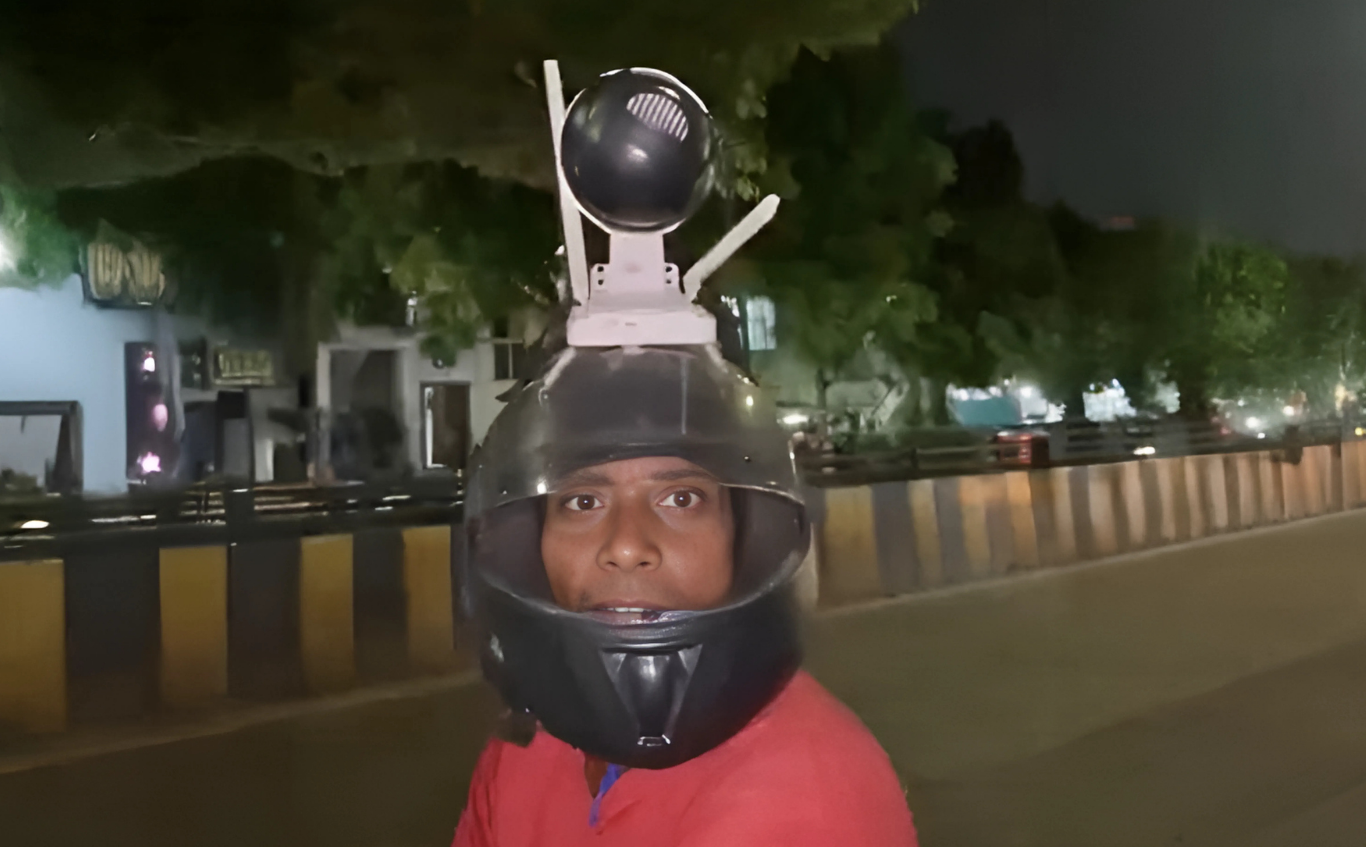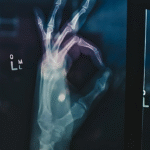
Who Is CCTV Man? The Real-Life Vigilante Recording Every Step With a Helmet Camera
CCTV Man: A Real-Life Character Drawing Attention in Indore
In the age of fictional superheroes like Superman, Batman, Iron Man, and Spider-Man, a new figure has emerged from the streets of Indore, Madhya Pradesh—CCTV Man. Unlike the caped crusaders of comic books, CCTV Man is an honest individual who has caught the public’s eye not for any superpowers, but for his unique and unsettling method of self-protection: wearing a helmet with a live CCTV camera mounted on top.
Everywhere he goes, CCTV Man records his surroundings, earning both curiosity and concern from those who pass him on the streets. His unusual appearance and behavior have made him a local spectacle, stopping people in their tracks and sparking conversations online and offline.
Why Is CCTV Man Recording Everything?
The man behind the helmet, a resident of Gauri Nagar in Indore, says he began wearing the helmet with the CCTV camera out of fear for his safety. He claims he is caught in a bitter dispute with a neighbor over property issues that have escalated into personal threats.
In his own words, he no longer feels safe—even after going to the local police authorities. As a result, he has taken the unusual step of recording every moment of his public life.
He believes that wearing a helmet-mounted CCTV camera acts as both a deterrent against attacks and a means of evidence collection should anything happen to him while he’s on the street. This behavior has turned him into a symbol of fear-driven self-surveillance in a neighborhood where tensions have reached a boiling point.
The Dispute That Sparked the Helmet Camera
The root of the situation reportedly lies in a conflict between CCTV Man and his neighbor, identified as Yuyudhan. Some time ago, CCTV Man installed a security camera at his home, which his neighbor accused of being pointed towards his bathroom, sparking a privacy row.
The neighbor, Yuyudhan, filed a complaint alleging that the camera violated his privacy, intensifying the feud and causing unrest between the two parties. Since then, the situation has worsened, and the man claims to have been threatened multiple times.
Fearing retaliation or even physical harm, he made a drastic decision—transforming himself into a walking surveillance unit, believing that constant recording could either prevent attacks or bring justice in the event something goes wrong.
Local Reaction to the Emergence of CCTV Man
Residents of Indore’s Gauri Nagar area are stunned. Many have begun referring to the man simply as CCTV Man, with locals often stopping in their tracks to watch him as he walks past. Some view him as a local oddity, while others sympathize with his situation, especially considering the alleged lack of police support he claims to have received.
In today’s world, where surveillance cameras are increasingly common, this extreme personal step adds a new, uncomfortable layer to the conversation about privacy, security, and mental health. While some people admire his creativity in protecting himself, others raise concerns about the implications of filming public spaces and potentially invading others’ privacy.
Safety or Paranoia? The Ethics of Personal Surveillance
CCTV Man’s situation raises a bigger societal question: how far is too far when it comes to self-surveillance? Installing home CCTV for protection is widely accepted, but walking around with a surveillance camera mounted to your head is something entirely new and controversial.
Legal experts suggest that filming in public spaces is generally legal in India as long as it doesn’t infringe on someone’s privacy. However, pointing a camera at specific individuals without consent—or even unintentionally capturing sensitive areas—can lead to serious legal consequences.
In the case of CCTV Man, his original home camera installation already led to allegations of inappropriate surveillance. Now, with a helmet-mounted device constantly recording, those privacy concerns are heightened.
Is this man exercising his right to self-defense, or has the situation turned into public paranoia? The answer depends on one’s perspective—and on how law enforcement chooses to interpret his actions.
When Fear Breeds Innovation: A Unique Form of Protest
Whether people see him as paranoid or pioneering, CCTV Man has unintentionally become a symbol—one that represents distrust in the system, growing concern for personal safety, and the extreme lengths some individuals are willing to go to protect themselves.
This real-life case is a sobering reminder that not everyone feels protected by societal structures. And when institutions fail to offer security, some people will invent their methods—no matter how unorthodox.
The helmet camera, in this sense, is more than just a gadget. It’s a visible protest, a message to his community, and perhaps even to the state:
“I don’t feel safe, and I’m taking matters into my own hands.”
The Viral Effect: CCTV Man Gains Internet Fame
As expected in today’s digital world, videos and pictures of CCTV Man have begun circulating on social media platforms, bringing him viral attention beyond the boundaries of Indore.
While some online users mock his appearance or question his mental state, others express genuine concern for the circumstances that led him to this point. The story has now started gaining traction in local media outlets and may soon reach a national audience.
Some users have even begun comparing him to comic book vigilantes, humorously dubbing him “India‘s real-life Batman,” though his gadgets and mission are rooted more in anxiety than heroism.
CCTV Man: A Reflection of Today’s Society
In the end, the story of CCTV Man is not just a bizarre headline. It reflects the broader issues of urban stress, interpersonal conflicts, distrust in policing, and the blurring lines between technology and personal space.
His actions might seem extreme, but they expose very real fears that many citizens harbor—the fear of being harmed, unheard, or ignored. CCTV Man may not have superpowers,
but he has something arguably more powerful in today’s world: the camera lens. Whether seen as a hero, a protester, or just a fearful man, his story is a mirror to the times we live in.











